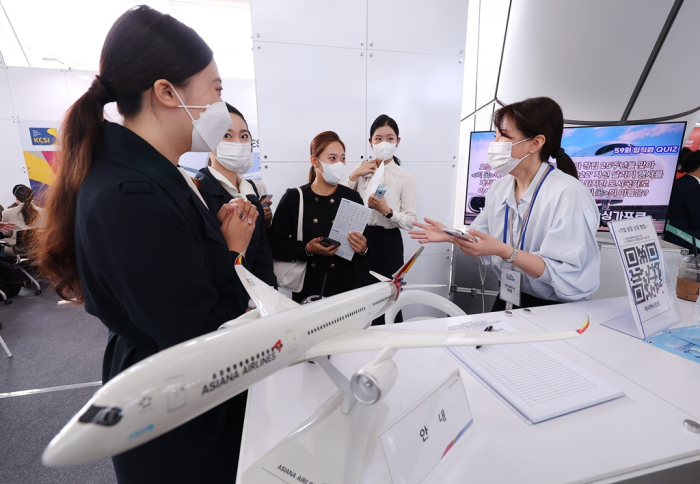Economy
Korea’s job growth at 11-month low deepens economic woes
The employment outlook deteriorates on lofty inflation, higher interest rates, sluggish exports
By Nov 09, 2022 (Gmt+09:00)
1
Min read
Most Read
LG Chem to sell water filter business to Glenwood PE for $692 million


Kyobo Life poised to buy Japan’s SBI Group-owned savings bank


KT&G eyes overseas M&A after rejecting activist fund's offer


StockX in merger talks with Naver’s online reseller Kream


Mirae Asset to be named Korea Post’s core real estate fund operator



South Korea’s job growth in October fell for a fifth consecutive month to the lowest in eleven months, boosting concerns over a slowdown in Asia’s fourth-largest economy.
The number of employees increased by 677,000 last month from a year earlier, or 2.4%, the smallest rise since November 2021, government data showed on Wednesday. Employment growth has been slowing since June.
“There are various downside risks (to job growth) such as lofty inflation, higher interest rates and sluggish exports,” said the Ministry of Economy and Finance in a statement. “The growth is likely to slow down further next year, given increasing economic uncertainties and a base effect.”
The unemployment rate in October held steady at 2.4%, the same as the previous month.
STRUCTURAL FACTORS FOR SLOWER JOB GROWTH
The South Korean economy grew during the third quarter at its slowest pace in one year on weak exports amid the global downturn and higher interest rates. The country’s exports fell for the first time in two years in October, posting a trade deficit for seven months in a row.
Despite such gloomy economic conditions, the Bank of Korea may increase interest rates by 50 basis points again later this month as the US Federal Reserve continues to aggressively tighten monetary policy.
October’s job growth was mainly led by those aged 60 and above, which made up 460,000 of the on-year gain. People in their 50s and 30s accounted for 147,000 and 61,000, respectively. The new job additions for those in their 20s only came to 28,000.
By industries, the manufacturing, accommodation, restaurant and healthcare sectors increased jobs in October. On the other hand, the number of employees in the retail and financial sectors fell over the period.
Write to Eui-Jin Jeong at justin@hankyung.com
Jongwoo Cheon edited this article.
More to Read
-
 BOK may raise rates by 50 bps again on Fed, inflation
BOK may raise rates by 50 bps again on Fed, inflationNov 03, 2022 (Gmt+09:00)
2 Min read -
 EconomyKorea’s 1st export decline in 2 years dims BOK’s big-step rate hike outlook
EconomyKorea’s 1st export decline in 2 years dims BOK’s big-step rate hike outlookNov 01, 2022 (Gmt+09:00)
3 Min read -
 EconomyKorea to face more headwinds after Q3 growth hits 1-yr low
EconomyKorea to face more headwinds after Q3 growth hits 1-yr lowOct 27, 2022 (Gmt+09:00)
2 Min read
Comment 0
LOG IN


